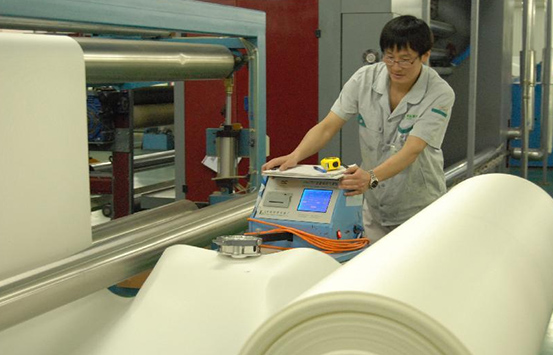The fabric permeability reflects its performance in conducting and transmitting particles, including gas, moisture, liquids, and even photons. Permeability mainly involves permeability, moisture permeability, water permeability, and the transparency of through holes.
Fabric Air permeability
Air permeability is the performance of gas molecules passing through fabrics, which is the most basic performance in fabric permeability. Air permeability affects the wearing comfort of fabric, such as thermal insulation and warmth retention, and also affects the performance of fabrics, such as parachutes, airbags, hot air balloons, etc.
The air permeability in industrial filter cloth refers to the volume of gas passing through a unit area of the sample per unit time under constant temperature and unit pressure, with the gas passing through steadily.
General regions | Unit | Test pressure | Test area |
China | L/m2/s | 200Pa | 20cm2 |
Europe | L/dm2/min | 200Pa | 20cm2 |
USA | CFM | 125Pa | 38cm2 |
Conversion:1L/m2/s=0.6L/dm2/min=0.2 CFM
To measure the fabric air permeability, a fabric air permeability instrument can be used.

Main factors affecting the fabric air permeability
There are many factors that affect the air permeability of filtration textiles, which are related to the size and connectivity of the fabric pores, the volume fraction and thickness of the fabric, as well as the temperature, humidity, and atmosphere pressure of the environment.
1)Fabric structure
Different fabric structures result in different pores. The air permeability of fabrics depends more on the number of large pore sizes. From structural standpoint, under the same arrangement density and tightness conditions, the strength of air permeability is plain weave<twill weave<satin weave<porous weave.
2)Yarn structure
The moisture regain of the fiber has a significant impact on the air permeability. The tighter the structure of the yarn, the smaller the permeability inside the yarn, and vice versa.
3)Environmental conditions
When the temperature is constant, the air permeability of the fabric tends to decline as the relative humidity of the air increases. The higher the relative humidity, the greater the impact on the air permeability of the filter fabric with a higher moisture absorption capacity.
Air permeability is a crucial consideration when selecting filter cloth. Industry-standard tolerance: ±20% for multifilament cloth, while ±25% for monofilament cloth.